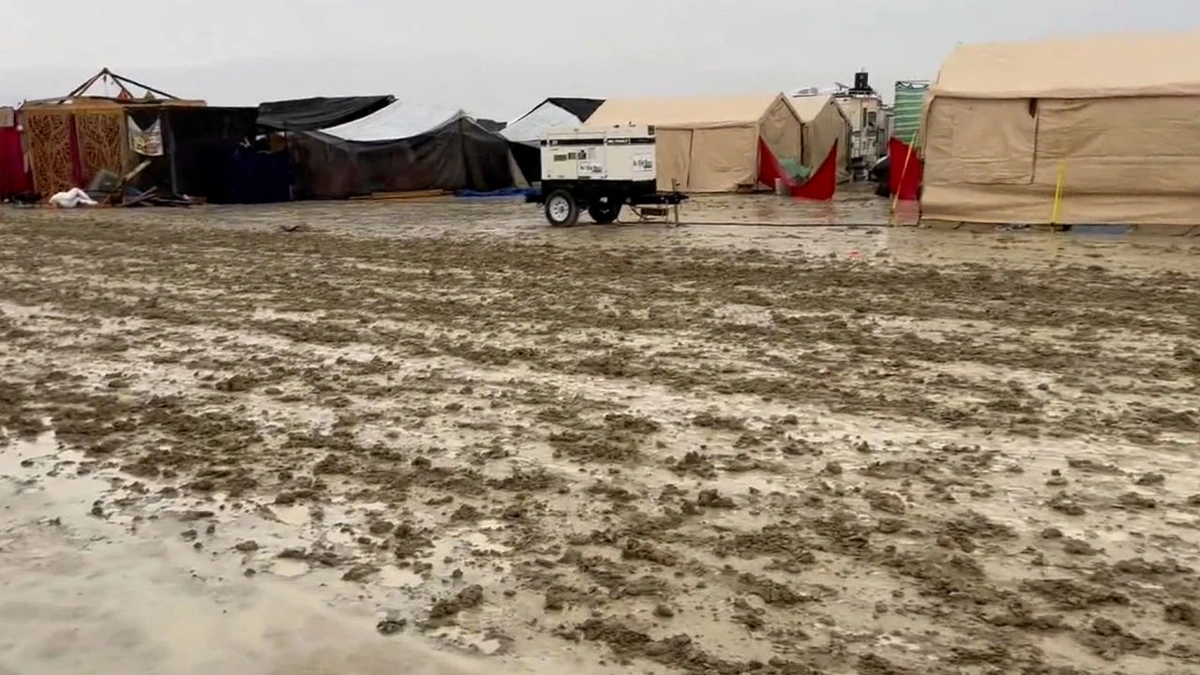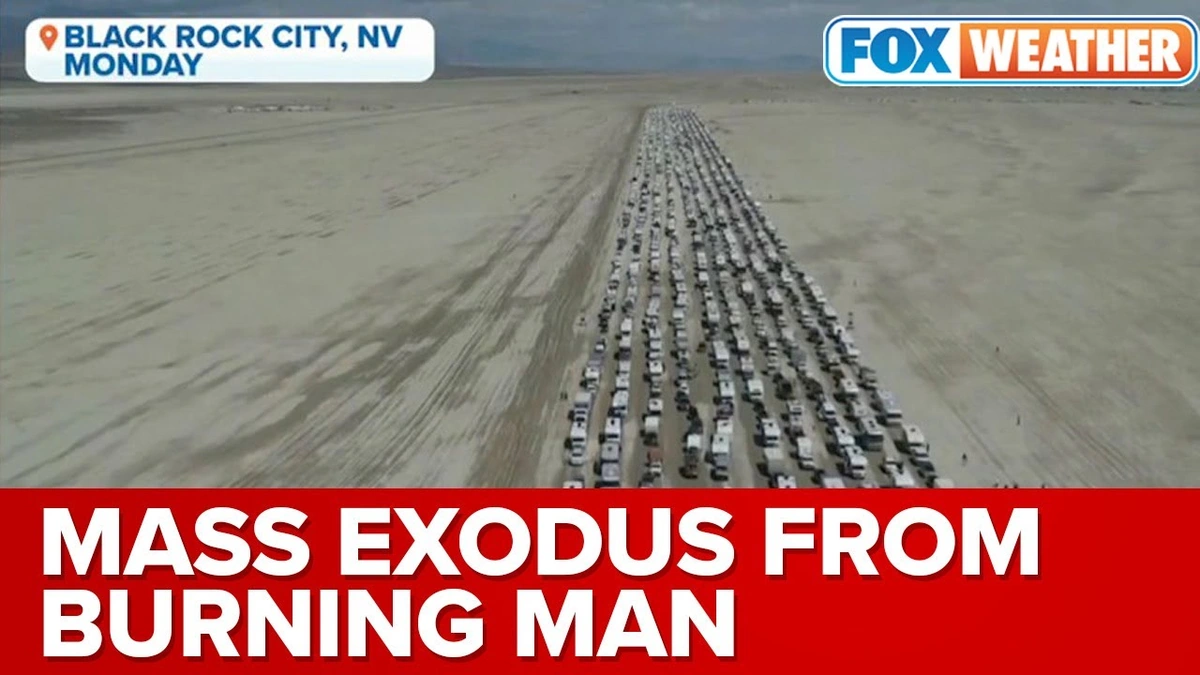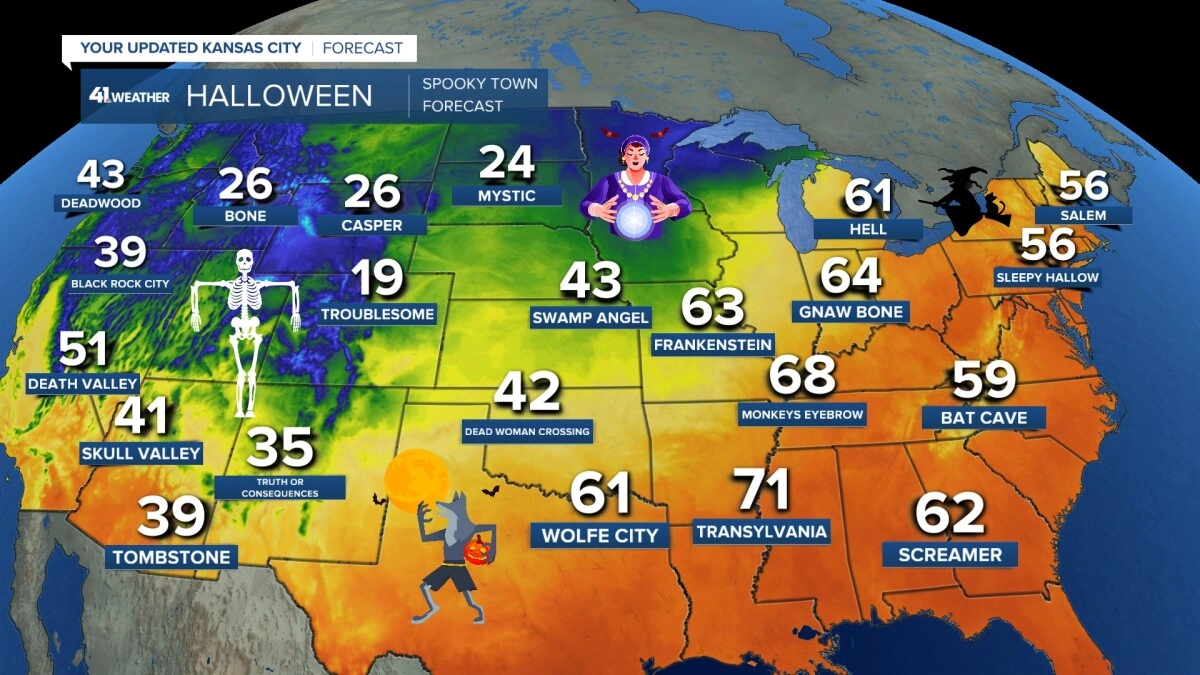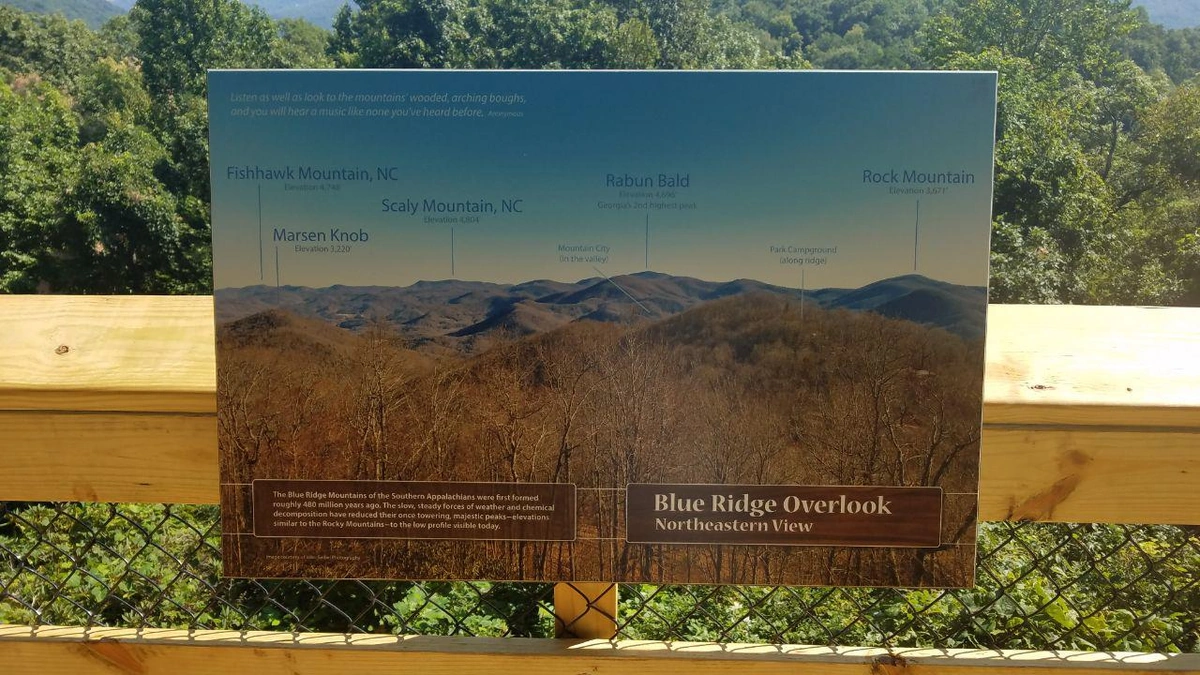Alright, let’s talk. You’ve probably seen the pictures. The ones from Burning Man 2023. The apocalyptic mud, the stranded celebrities, the general vibe of a Mad Max movie that ran out of budget for special effects because the reality was wild enough. From a cafe here in India, watching those scenes unfold felt both totally alien and strangely familiar. We know monsoons. We know what a real downpour can do. But this… this was different.
What you saw wasn’t just a freak rainstorm. It was a crash course in the brutal, unforgiving, and utterly fascinating science of the black rock city weather . And understanding it is the key to understanding Burning Man itself. It’s not just a backdrop for the art; it’s the main character, the ultimate gatekeeper.
So, pull up a chair. Let’s get into why a patch of desert in Nevada can turn from a sun-scorched frying pan into an inescapable pit of sticky mud overnight. Because the story here isn’t just about rain; it’s about geology, physics, and a lesson in radical self-reliance.
The Anatomy of a Dry Lakebed (And Why It Hates Water)

Here’s the thing you have to understand first: Black Rock City isn’t built in a normal desert. It’s built on a “playa.”
That’s the geological term for an ancient, dry lakebed. Imagine a massive lake that evaporated thousands of years ago, leaving behind a perfectly flat surface made of the finest sediment silt and clay. For most of the year, the Black Rock Desert playa is one of the flattest places on Earth, baked hard by the relentless sun. It’s so flat you can supposedly see the curvature of the Earth.
But that rock-hard surface is a lie. It’s a fragile crust. The particles that make it up are incredibly fine, and they are highly alkaline. When dry, this creates the iconic alkaline dust that gets into everything at Burning Man. It’s a fine, white powder that feels like a constant companion.
And when it gets wet? Chaos.
Unlike sandy soil that allows water to drain through, the playa’s dense clay and silt particles do the opposite. They absorb the water and transform into a thick, heavy, cement-like goo. It’s not mud as we know it. People who were there described it as “peanut butter” or “wet concrete.” It clings to everything, adding kilograms of weight to your boots with every step and making wheeled vehicles completely useless. This is why a mere inch or two of rain could trap 70,000 people. The ground itself became the prison. This unique geology is well-documented by experts at theU.S. Geological Survey, who study this remarkable landscape.
A Tale of Two Extremes | The Sun God and the Dust Devil

Even without a biblical flood, the “normal” Burning Man weather is a masterclass in extremes. It’s a place that demands respect. You don’t just visit the playa; you survive it.
First, there’s the heat. During the day, the Black Rock Desert temperature can easily soar to 38°C (100°F) and beyond. There is zero natural shade. None. The sun beats down, reflecting off the pale ground, and dehydration becomes your number one enemy. You’re expected to bring and carry all your own water (the recommendation is about 1.5 gallons, or 5.7 litres, per person, per day). It’s a serious business.
But then the sun sets. And the desert shows its other face.
The temperature plummets. Drastically. It can drop to 10°C (50°F) or even lower. The same environment where you were battling heatstroke a few hours ago now presents a genuine risk of hypothermia. This massive swing is classic Nevada desert climate with no humidity or cloud cover to trap heat, it radiates straight back into space the moment the sun is gone. Packing layers isn’t a suggestion; it’s a survival mandate.
And then there’s the wind. On the vast, open playa, wind can whip up with zero warning, creating the infamous whiteouts. A Burning Man dust storm isn’t just a bit of sand in your eyes. It’s a disorienting wall of white dust that can reduce visibility to zero in seconds. You can’t see your hand in front of your face, let alone your tent. Goggles and a mask are non-negotiable parts of any outfit, any time of day.
The 2023 “Mud-pocalypse” | A Warning Shot?

So what made 2023 so different? It was the sheer volume of water in a short time. The playa can handle a light sprinkle. It can’t handle the equivalent of 2-3 months of rain in 24 hours.
This event, which turned the festival into a massive exercise in communal survival, raises a bigger question. Was this a once-in-a-century fluke, or a glimpse into a new normal? Climatologists suggest that extreme weather events are becoming more frequent and more intense globally. What was once considered a rare possibility for the black rock city weather might now be a scenario that organisers have to plan for every single year. The playa mud situation wasn’t just a news story; it was a real-time climate change case study.
It’s a powerful reminder that no matter how much art we build or how strong our community is, nature is always in charge. The experience tested the core principle of Burning Man: Radical Self-Reliance . People had to conserve food, water, and shelter, and more importantly, they had to rely on each other. In a weird way, the disaster brought out the very best of the event’s ethos. It wasn’t about the parties anymore; it was about survival, community, and shared humanity. It became a bit like a real-life TV show, though far more intense than waiting to find outwhen does love island reunion come out.
So You Still Want To Go? A Quick Reality Check

Reading all this, you might be thinking, “This sounds absolutely miserable. Why would anyone do this?”
And that’s a fair question. The answer is that the challenge is the point. The harsh environment strips away the non-essentials and forces a kind of raw, present-moment awareness. Surviving it, and helping others survive it, is a huge part of the experience. It’s about building a temporary city and a society that can withstand one of the planet’s more inhospitable environments.
It’s about proving to yourself that you can be resilient. It’s a place where you have to be your own hero, a real-life version of what we see in the movies, kind of like the newDavid Corenswet Superman explained. You are responsible for your own survival, and that is a powerful, life-altering feeling.
Your Black Rock City Weather Questions, Answered
What’s the best time of year to visit Black Rock City for weather?
Honestly, “best” is relative. Burning Man is held in late August/early September specifically because it’s typically the driest time of year. Any other time, the risks of rain (and thus, mud) or extreme cold are even higher. The event timing is a calculated risk.
How bad are the dust storms really?
They can be intense. Imagine being inside a cloud of milk where you can’t see anything more than a few feet away. They can last for minutes or for hours. The dust is also highly alkaline, which can be irritating to your skin and lungs, making masks and goggles absolutely essential.
Was the mud from the 2023 flood dangerous?
Yes, potentially. The alkalinity of the playa’s surface can cause a chemical burn-like condition known as “playa foot” if you have prolonged exposure with wet skin. It’s another reason why being trapped in the mud was a serious health and safety issue, not just an inconvenience.
Can you predict the weather there accurately?
No. The black rock city weather is notoriously unpredictable. Forecasts can give you a general idea, but conditions can change in an instant. This is a core part of the “be prepared for anything” mindset that defines the event.
Why is it so cold at night in the desert?
It’s due to a phenomenon called radiative cooling. During the day, the ground absorbs a lot of heat. In humid places, clouds and water vapor in the air act like a blanket, trapping that heat. In the dry desert air, there’s no blanket. As soon as the sun sets, all that heat radiates straight back into the atmosphere, causing temperatures to drop very quickly.
Ultimately, the weather at Black Rock City isn’t just something to be endured. It’s an active participant. It’s the force that binds people together, the pressure that creates the diamond of community. The 2023 flood wasn’t the end of Burning Man; it was just the latest, most dramatic chapter in its long and wild story. It was a reminder that on the playa, you don’t conquer nature. You just get the privilege of dancing with it for a week.




